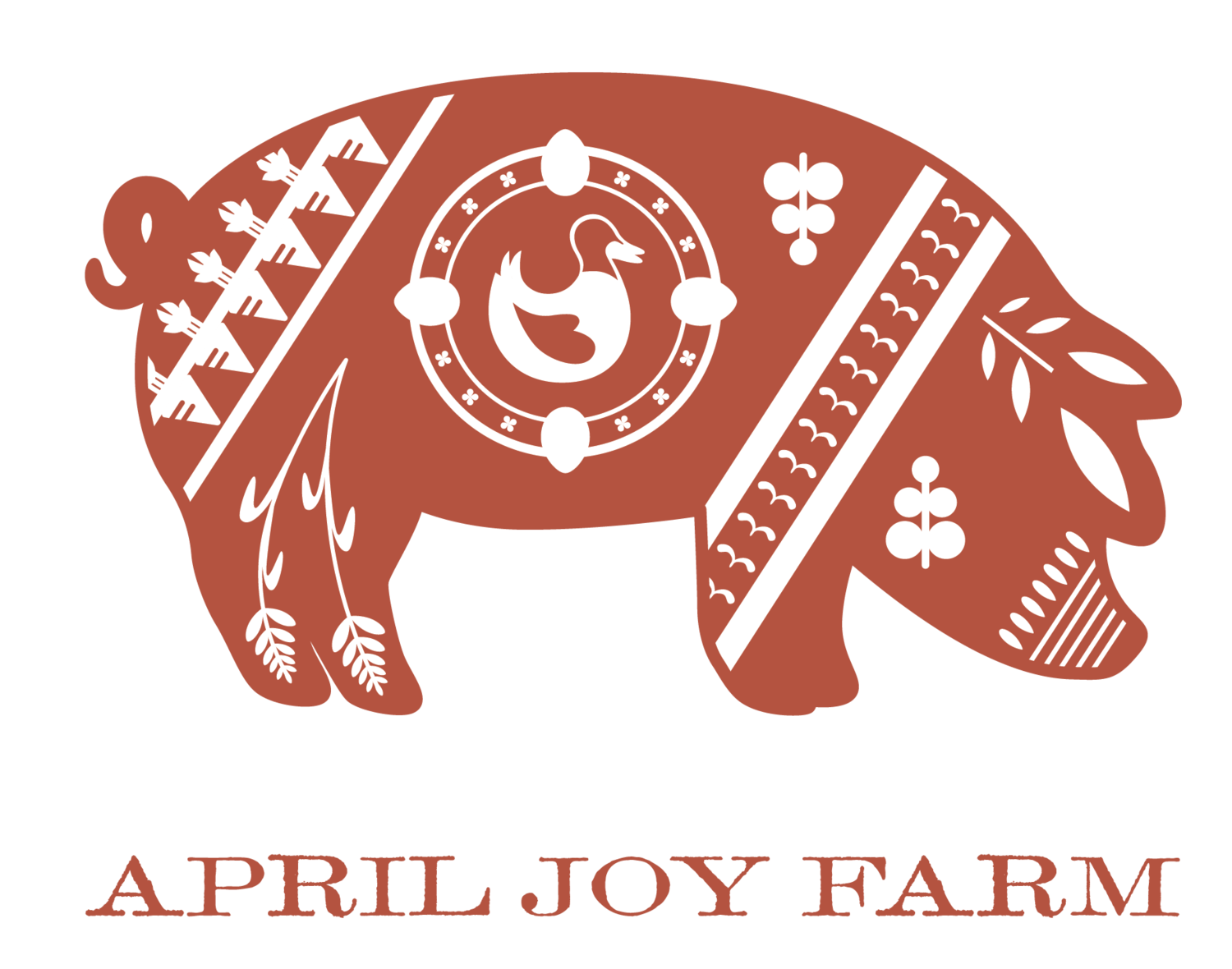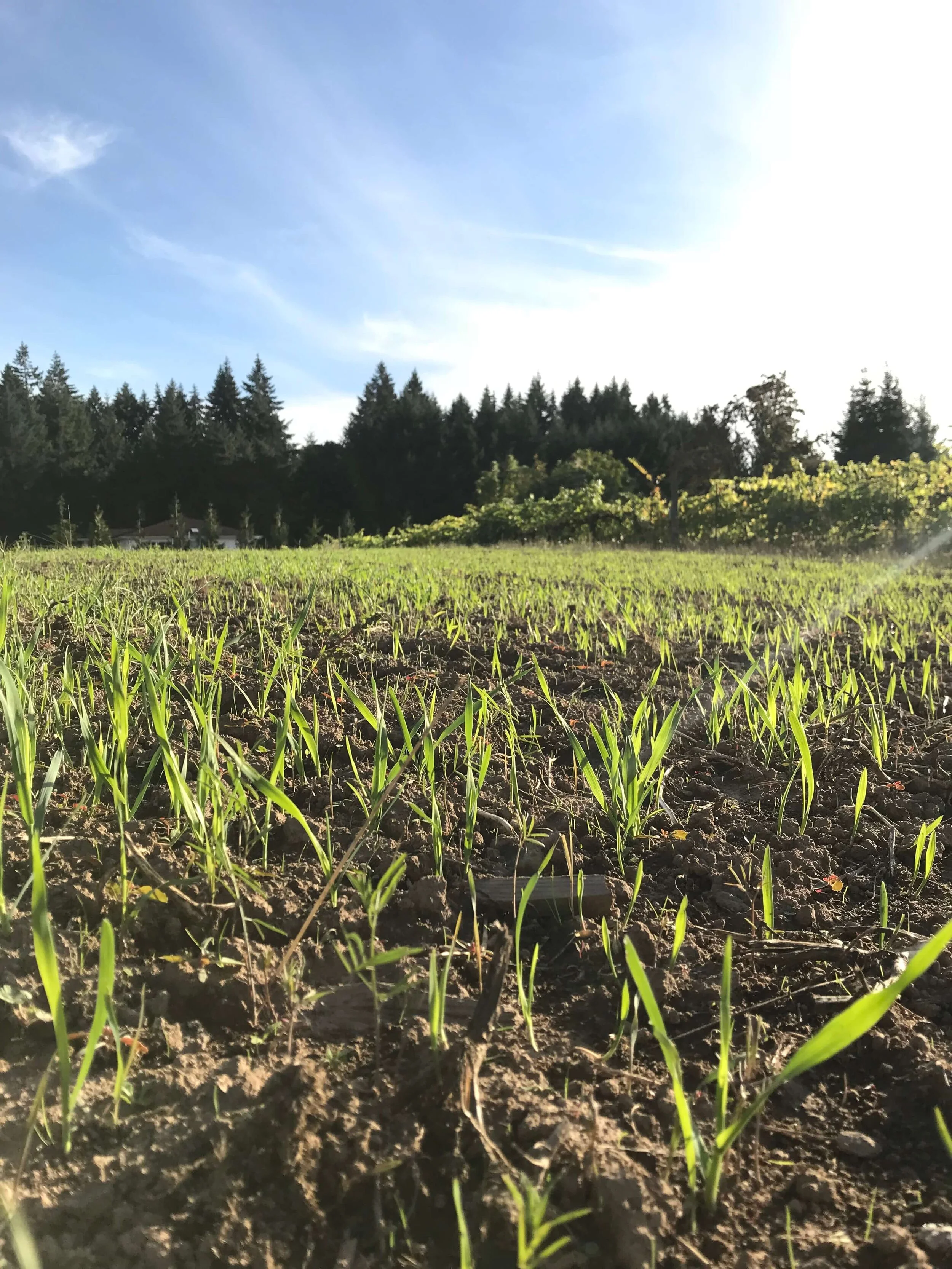Seeding for Our Soil
All spring and summer, we seed a variety of plants to feed our families. But now is the time of year Brad and I begin to focus on seeding cover crops –plants that will feed our soil.
The term cover crops encompasses a broad category of plants that are grown to improve soil health in a number of ways, including: to prevent soil erosion, increase organic matter (food for soil organisms), replenish nutrients to the soil, and improve drainage. Cover cropping can happen at any time of year. But winter cover crops are of special importance to our farm.
I’ve fielded multiple questions at CSA pickup over the last few weeks about what to do with home gardens and raised beds this time of year. Those spring lettuces have gone bitter or the onions have all been harvested and now the soil is bare and weeds are colonizing the rows. Just as we are doing on a larger scale, it’s time to put your garden beds to rest for the coming winter. Cover crops are a way to keep that precious garden soil in good tilth until you’re ready to plant next spring.
One aspect of our farm I emphasize on tours is the need for every practice we implement to serve not just one but at least two and ideally three purposes. This is a way to minimize the workload but also to strengthen the web of connectivity while providing some measure of redundancy. So the first thing we do when creating our cover crop plan is to identify at least three ways we want our cover crops to improve soil health.
The main goals of our winter cover crops are to (1) replenish organic matter so our soil life has plenty of food and the soil itself can maintain good structure, (2) prevent leaching and increase availability of soil nutrients and (3) prevent compaction and erosion caused by bare, exposed soil. In home garden beds it may be important to have flowering plants for pollinators and early spring beauty, structured stalks for winter birds to utilize, palatable greens for chickens to eat or lush, low growing plants that won’t be a challenge to turn under come spring.
Identifying our goals makes it easier to select which plants we will use in our cover crop mix. For instance, we want to make sure our mix has at least one plant that produces a lot of biomass (organic matter) in a short period of time. We typically use vetch.
We also want to make sure to include a plant that will germinate quickly and form an extensive root system to take up any available nutrients in the soil and keep winter rains from leaching them beyond the root zone of our future market crops. Grains such as winter wheat, oats, or rye grain, are excellent for this purpose.
Finally, we want to encourage the amazing partnership between a certain plant family (legumes) and a bacteria (rhizobia) to pull nitrogen out of the air and store it in root nodules. That means next spring we’ll need to import less nitrogen from off-farm sources to grow our vegetables. One of the major findings from the soil health roadmap I put together for April Joy Farm is that we lose substantially more nitrogen (a primary plant nutrient) each year due to leaching caused by rainfall than we do from all the market produce we export off the farm over the whole year. Can you believe that? Given our wet climate, I suspect the same is probably true for your garden beds. For us, including at least one leguminous winter cover crops is a key part of our fertility program. Our favorite legumes include vetch, peas, fava beans, crimson and red clovers. Fava beans are great because sometimes you are able harvest beans off the plants in late spring. You can have your cover crop and eat it too!
Other things we consider when choosing cover crops include: how long we’ll need the cover crop in place, (do we want a quick growing annual or a perennial?), how tender or fibrous the stalks are so we know how much time it will take to decompose when we turn the crop under, and how winter hardy the specific variety is. An excellent primer on this subject for Pacific Northwest home gardens west of the Cascades can be found here.
Even though we’ve just passed the half way point of our CSA season, we’re many months pass the halfway point of our farming season. This time of year, I’ll be honest- a sort of weariness has set into my body and I seem to need to take more breaks each work day. It’s not hard to understand why some farmers choose not to seed winter cover crops. It’s like choosing to go to bed with dirty dishes in the sink after the big house party. One can rationalize: There is enough weeds and plant residues in my field to cover the soil. I’m tired. I’ll just clean up the fields next spring. Plus, cover crops cost money! It takes a sort of mental fortitude and stubbornness to go back out to the field after the last head of lettuce or onion has been pulled and devote oneself to working the soil, sowing, and watering in a crop that we’ll never harvest or sell.
But there’s no such thing as a healthy farm without healthy soil. So every year, we commit to sowing hundreds and hundreds of pounds of cover crops, all by hand. It’s my version of a prayer of gratitude. When I’m walking up and down row after row broadcasting cover crop seed across the field with the straps of a heavy seeder on my shoulders, I have ample time to think about how grateful I am for this plot of Hillsboro silt loam.
No matter how weary, I remember that this is my opportunity to say thank you to our precious, hardworking soil for providing us another season of nutrient dense, diverse and deliciously good food. ~AJ
“We must not, in trying to think about how we can make a big difference, ignore the small daily differences we can make which, over time, add up to big differences that we often cannot foresee.”

